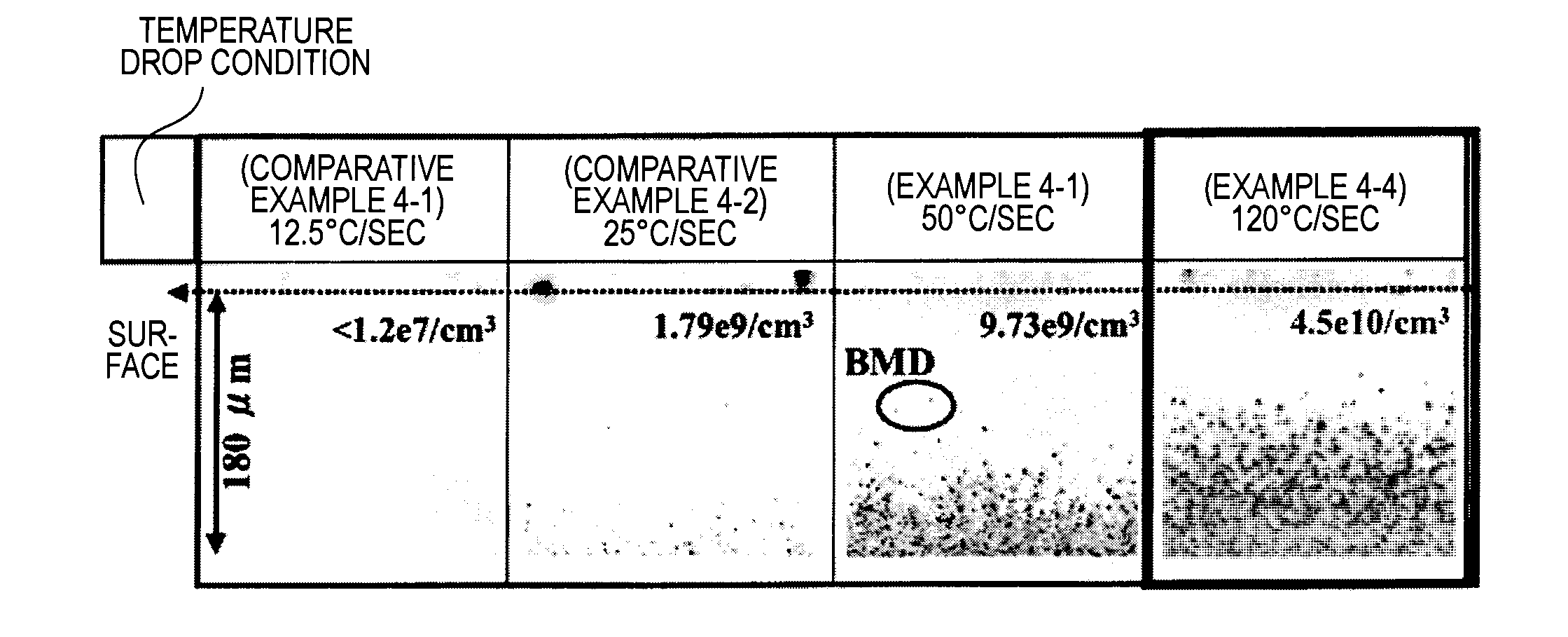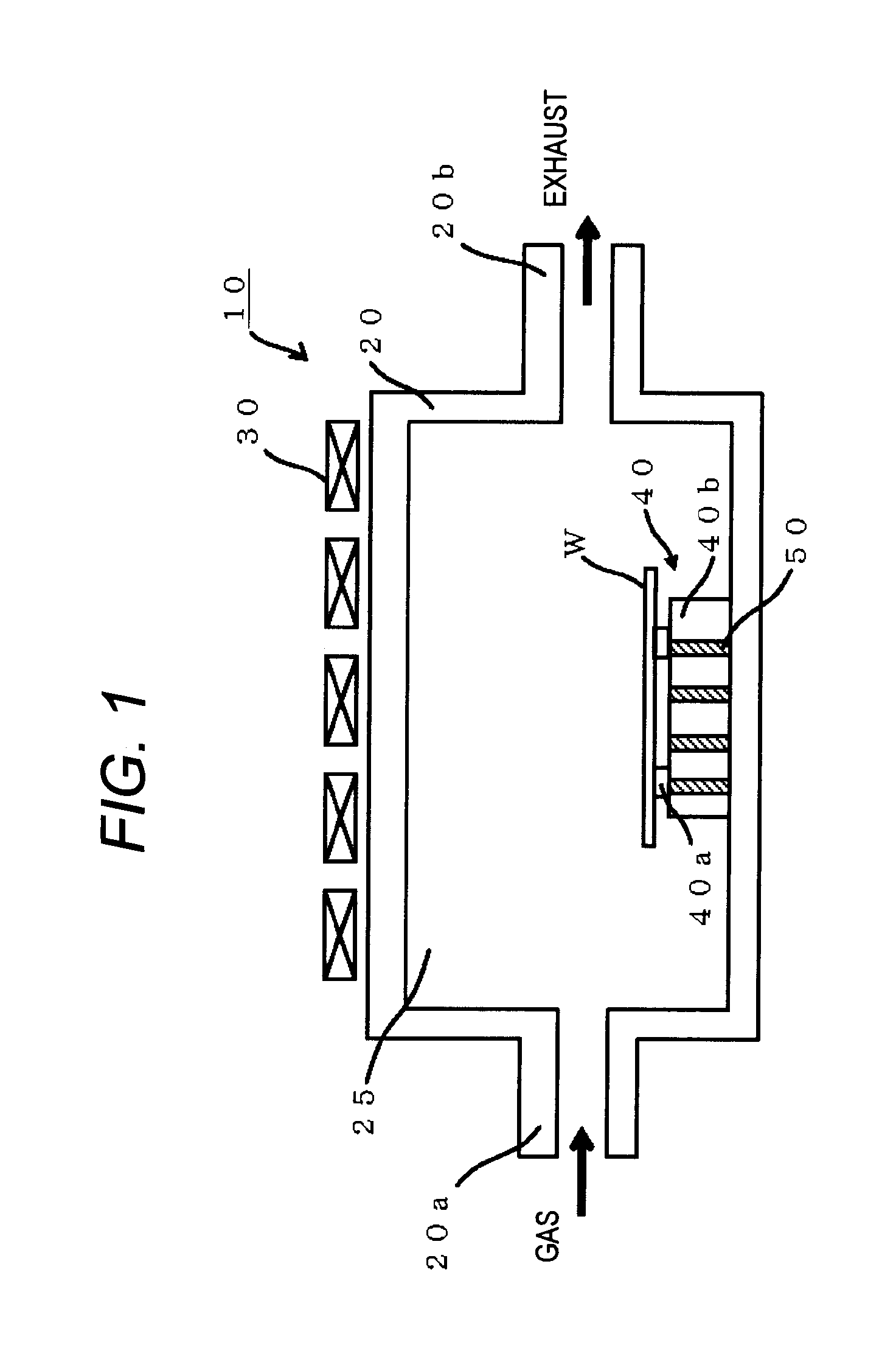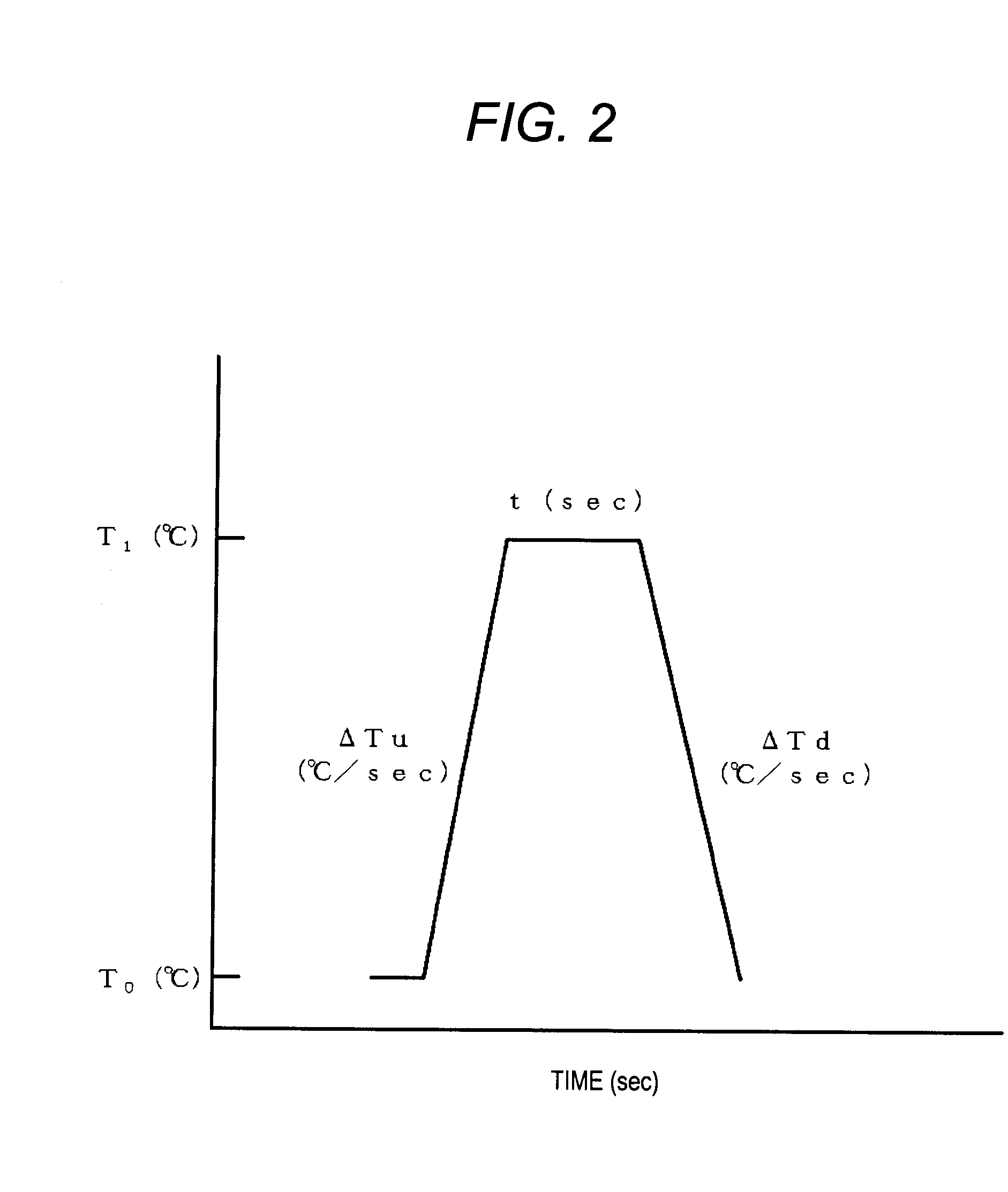Silicon wafer, method for manufacturing the same and method for heat-treating the same
a technology of silicon wafers and heat-treating methods, which is applied in the direction of polycrystalline material growth, crystal growth process, after-treatment details, etc., can solve the problems of reducing the yield of the device, difficult to prevent the generation of vacancy-type point defects, and increasing the quality requirements of the silicon wafer to be used as a substrate of such semiconductor devices, so as to improve the reduction capacity of grown-in defects and suppress the generation of slips
- Summary
- Abstract
- Description
- Claims
- Application Information
AI Technical Summary
Benefits of technology
Problems solved by technology
Method used
Image
Examples
example 1
[0166]Advantages of the first embodiment of the invention will hereinafter be described using Examples 1-1 to 1-4, but the invention is not limited to or by Examples 1-1 to 1-4.
example 1-1
[0167]A silicon single crystal ingot having a P type, a crystal plane direction (001), a concentration [Oi] of oxygen solid solution of 1.2×1018 atoms / cm3 (calculated from a conversion factor based on Old ASTM), and a resistance of from 23 to 25 Ω / cm was produced by the CZ process.
[0168]Nitrogen doping treatment was performed by filling the crucible with a silicon wafer coated with a silicon nitride film and a pull rate V was adjusted to 1.2 mm / min on average and at the same time, the pull rate V and a temperature gradient G at 1300° C. in the direction of a crystal axis were controlled to control a V / G ratio in order to prevent generation of dislocation clusters during the growth of a silicon single crystal.
[0169]The resulting silicon single crystal ingot was then sliced into a wafer by a wire saw and subjected to beveling, lapping, etching, and polishing to obtain a double-side polished silicon wafer having a diameter of 300 mm.
[0170]Then, from the same lot of the silicon wafers t...
example 1-2
[0176]A double-side polished silicon wafer having a diameter of 300 mm was prepared in a similar manner to Example 1-1 except for the use of a silicon single crystal ingot prepared by the CZ process and having a P type, a crystal plane direction (001), a concentration [Oi] of oxygen solid solution of 1.0×1018 atoms / cm3 (calculated from a conversion factor based on Old ASTM), and a resistance of from 28 to 30 Ω / cm.
[0177]Then, several silicon wafers were sampled from the same lot and grown-in defects in the device surface of the silicon wafers thus sampled were observed with AFM. The maximum size of the thus-observed grown-in defects in terms of a diameter of a sphere having a volume equal to that of the grown-in defects was measured. As a result, the maximum size of COP measured in Example 1-2 was 100 nm.
[0178]Then, using an RTP apparatus 10 as illustrated in FIG. 1, a rapid heating / cooling thermal process of the silicon wafers was performed. In Example 1-2, the rapid heating / cooling...
PUM
 Login to View More
Login to View More Abstract
Description
Claims
Application Information
 Login to View More
Login to View More - R&D
- Intellectual Property
- Life Sciences
- Materials
- Tech Scout
- Unparalleled Data Quality
- Higher Quality Content
- 60% Fewer Hallucinations
Browse by: Latest US Patents, China's latest patents, Technical Efficacy Thesaurus, Application Domain, Technology Topic, Popular Technical Reports.
© 2025 PatSnap. All rights reserved.Legal|Privacy policy|Modern Slavery Act Transparency Statement|Sitemap|About US| Contact US: help@patsnap.com



